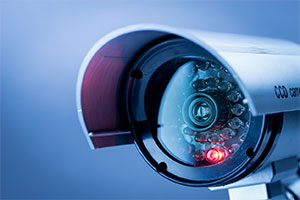Comprehensive Guide to Fire and Security System Integration
Fire and security system integration plays a crucial role in ensuring the safety and protection of buildings, assets, and people. These systems work together to provide a comprehensive solution that not only addresses fire hazards but also incorporates security measures to prevent unauthorized access and detect threats. The integration of fire and security systems enhances efficiency, minimizes the response time to emergencies, and streamlines the management of these systems, ultimately improving the safety and overall security of the environment. A properly integrated system ensures that fire alarms, suppression systems, and emergency exits are linked with security measures like surveillance cameras, access control systems, and intrusion detection devices. In the event of a fire or security breach, the systems can communicate and activate various actions, such as notifying personnel, unlocking emergency doors, or alerting security teams. This coordination enhances the chances of preventing severe damage or injury by enabling a swift and synchronized response.

For a successful integration, it is essential to choose systems that are compatible and designed to work together seamlessly. This requires a detailed understanding of the building’s layout, the specific needs of the occupants, and the potential risks involved. Integration can be achieved through the use of advanced software platforms that allow the management of both fire and security systems from a single interface, simplifying the monitoring process and providing real-time data on both types of threats. Fire detection and suppression systems, such as smoke detectors, heat detectors, sprinklers, and fire extinguishers, can be connected with security surveillance systems, like cameras and motion sensors, to provide a higher level of situational awareness. When an alarm is triggered by a fire hazard, security cameras can automatically focus on the affected area to provide security personnel with a clear visual of the situation. Furthermore, access control systems can restrict or allow access to certain areas depending on the nature of the emergency, ensuring that only authorized individuals are allowed to enter or evacuate during a crisis.
The integration of these systems also offers long-term benefits, including reduced operational costs, fewer false alarms, and more effective resource allocation. By consolidating both fire and security systems, organizations can eliminate redundancies and achieve greater efficiency in both maintenance and response protocols. Regular system updates and testing are crucial to ensure that the integrated system is functioning optimally and providing the expected level of protection. In addition to the technical aspects, staff training is a vital component of an integrated fire and security system. Personnel should be well-versed in how to use the integrated systems, including responding to alarms, interpreting system alerts, and coordinating with emergency services. Furthermore, periodic drills and exercises are essential to maintain a high level of preparedness and ensure that everyone knows how to respond appropriately to a fire or security threat and check it out https://www.constructionplacements.com/the-blueprint-for-protection-navigating-cutting-edge-fire-and-security-installations/. Ultimately, the seamless integration of fire and security systems enhances overall safety and reduces the likelihood of damage or harm.

